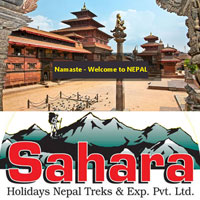BHOTE KOSHI River Rafting
"Like being flushed down on open air toilet"
"Expedition River" etc.
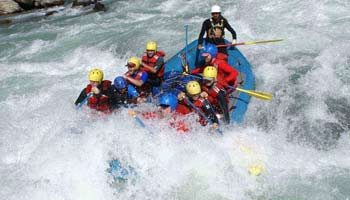 Highlights
HighlightsRIVER: BHOTE KOSI
GRADE CLASS: 3 TO 3+ RAPIDS
DURATION: 1 OR 2 DAYS
STARTING POINT: LAMOSANGHU
FINISHING POINT: DOLALGHAT
DISTANCE: 20 KM
Departure: Every Day / Time: 5.30 AM Except Monday
Bhote Kosi Day Trip Rafting Cost
Rs 3800/- for Nepali Guest
USD 50/- for INDIAN & FOREIGN Guest
Includes: Day Rafting / Transportation / Lunch Description
The Bhote Kosi is known as the River from Tibet and you can start a trip after a peak over the border into Tibet. The Kathmandu / Lhasa Highway (Arniko) runs along beside the river. You can run a day trip or do a two-day expedition and run parts of the river twice. It's a great beginner river for rafters and fun for kayakers at all levels. If you have limited time but desire an adrenaline river fun, then this is a perfect trip package for you because of the Bhote Kosi is most exciting short rafting trip. TENTATIVE RAFTING ITINERARY
Day 01: KATHMANDU TO LAMUSANGU DAM:
We take a trip to 95 km. east from Kathmandu is the starting point Lomosangu- Dam of the trip. This is a spectacular drive through villages and if weather permits, you will have fantastic mountain views i.e. Ganesh Himal, Langtang etc, we raft the first 10 km of the MOST exciting stretch of the river and then return to the start to play again the same stretch the next day rather than continue with only half a day paddling to the end. Drives back to our camp. Day 02: Continue Rafting & Drive to Kathmandu:
After breakfast a quick pack up and set out (approx. 9 to 10 a.m.) run white water hit again a class 3 rapid starting from upper section. You have the second chance to show how your raft team can work well together in challenging rapids. We have lunch on the river and continue the action until the take out point Dolalghat Bazaar about 2 to 3 p.m. and bus back to Kathmandu. Our trip is over here. Including:
Transportation, Accommodation Tented Camp, Breakfast, Lunch, Dinner + Paddle, Life Jacket, Helmet, Safty Barrel etc. SAFETY:
- Safety is the most important part of any river trip. Choosing a professional veteran rafting guide is the first -step. So it helps to abide by the following tips:
- Pick your river with care. Seek information from river guide before raft. Literature on river levels and difficulty.
- There should be a minimum of two rafts per trip, So that one can help when a fall happens from the other.
- Carry first-aid kit, Survival and rescue gear.
- Check to see that end loops and the leash are adequate before you push off. This makes it easier to keep hold of your boat when swimming big rapids, and also in the event of rescue.
- Be a team person, paddle synchronously.
- For boats, paddles and helmets, loud colors are recommended.
- Wear life jackets and helmets, properly too
- Keep your feet and arms inside the raft at all time.
- When you fall off into a rapid, float on your back, with your feet downstream. What we provided::
All Rafting and Kayaking Equipment Waterproof bags for personal gears | Helmet Life Jacket | Paddle Transportation | Food Kayak & Raft Instructions | Camping and Cooking Equipments Waterproof Barrels & First aid kit What you need:
Sleeping Bag & Mat | T-Shirt | River Sandal | Sun Tan Lotion-Lip Cream | Towel | Personal Toiletries | Water Bottle | Torch Light | Sun Glass | Camera (We have waterproof containers, | final responsibility is yours) | Half Pant | Sun Hats. River Classification of Difficulty:
Class: 1 Easy:
Moving water with occasional small rapid, few or no obstacles.
Class: 2 Moderate:
Small rapid with regular waves. Some maneuvering required but easy to native.
Class: 3 Difficult:
Rapids with irregular waves and hazards that need avoiding.More difficult maneuvering required but routes are normally obvious. Scouting from the shore is occasionally necessary.
Class: 4 Very Difficult:
Large rapid that require careful maneuvering. Dangerous hazards. Scouting from the shore is often necessary and rescue is usually difficult. kayakers should be able to roll. Turbulent water & large irregular waves may flip rafts. In the event of a mishap there is significant risk of loss, damage and/or injury.
Class: 5 Extremely difficult:
Continuous, powerful, confused water makes route finding difficult and scouting from the shore is essential.Precise manicuring is critical and for kayakers, rolling ability needs to be 100%. Rescue is very difficult or impossible and in the event of a mishap there is a significant hazard to life.
Class: 6 Nearly impossible:
Difficulties of class 6 carried to the extremely of navigability. Might possibly (but not probably) be run by a team of experts at the right water level in the right conditions with all possible safety precautions, but still with considerable hazard to life. Seasons:
October through mid-December and March through early May are the best times. It is possible in winter, but you have to watch out for hypothermia. During monsoon (June to September), the white water sections are dangerous, but gentler stretches are run-able. For More information
Write Us M@il to: holidaynepal@gmail.com | Contact Us: +977 9816 770 504 (WhatsApp) OR Hotline: +977 9841 911150
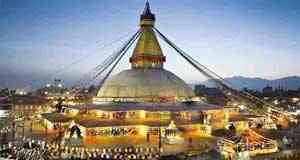 Boudhanath Stupa
Boudhanath Stupa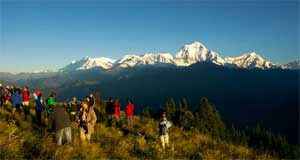 Poon Hill Excursion
Poon Hill Excursion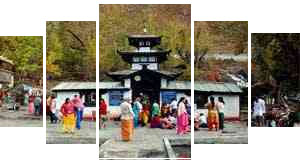 Muktinath Temple
Muktinath Temple Honeymoon Package
Honeymoon Package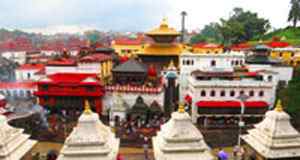 Pashupatinath Darshan
Pashupatinath Darshan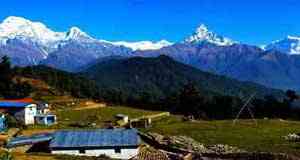 Australian Camp, Pokhara
Australian Camp, Pokhara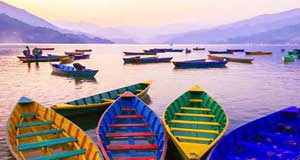 Fewa Lake, Pokhara
Fewa Lake, Pokhara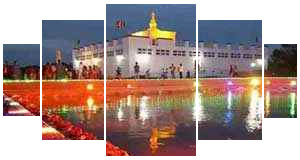 Mayadevi Temple Lumbini
Mayadevi Temple Lumbini EBC TREKKING
EBC TREKKING









